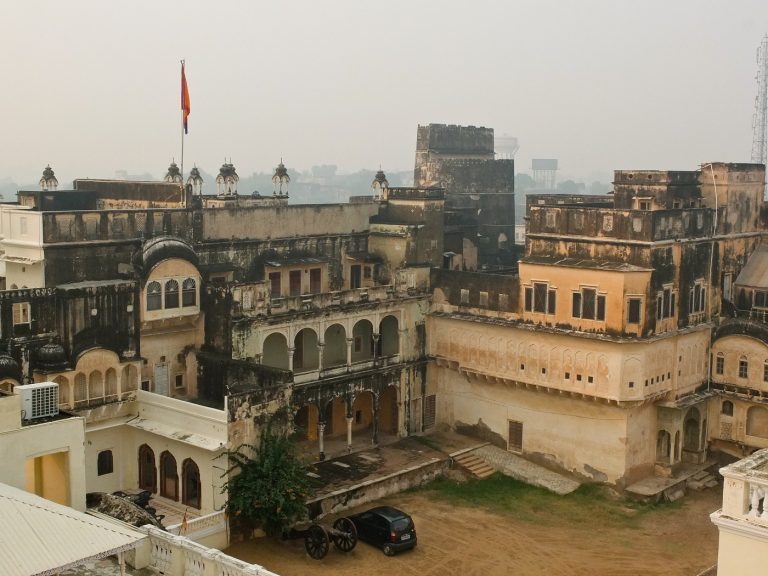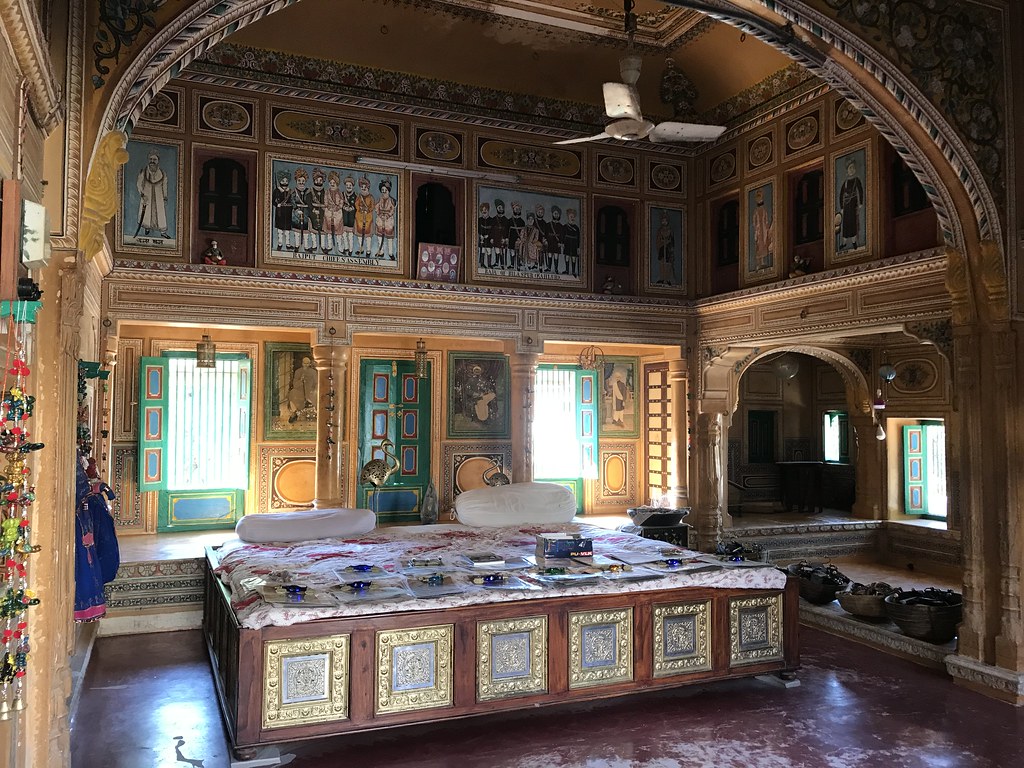
Known for its ornate havelis and majestic forts among other royal grandeur, Mandawa is a quaint little town in Rajasthan’s culturally vibrant Jhunjhunu district. In the heart of the Shekhawati region, the place with its glorious Rajput history, is also known for its affluent families who have historically played a significant role in the region’s cultural, social, and economic development. Owing to its royal rendition, it is also a hotspot for movie shoots.
Shikha Hazarika takes a detour!
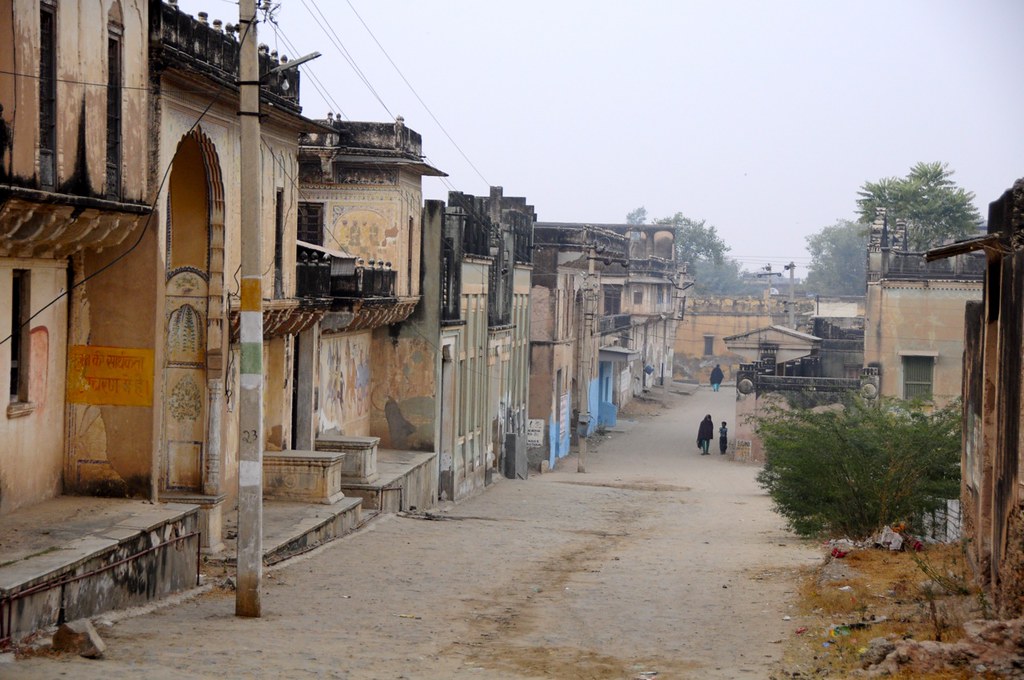
Beneath the vast azure skies of Rajasthan lies a town steeped in mystique, where time dances to the rhythm of heritage and every whisper carries the echoes of a bygone era. A town whose every corner illustrates tales of regal grandeur and timeless elegance. Mandawa, nestled in the heart of the Rajasthan in Jhunjhunu district, known for its rich cultural heritage stands as a testament to the State’s majestic past and vibrant present.
However, this captivating town was never on my wishlist. But now, I must say that the best adventures often arise from spontaneity, like the unexpected blossoming of a flower in an unplanned corner of the garden. Well, from the awe-inspiring frescoes that adorn the walls of centuries-old mansions to the narrow lanes bustling with the energy of local life, Mandawa invites you to immerse yourself in its splendour.
As one steps into Mandawa, one of the prominent towns in Shekhawati, one can clearly see a glimpse of Rajasthan’s rich cultural tapestry and I was no exception to it. As a custodian of its architectural, cultural, and historical legacy, Mandawa holds a special place in the Shekhawati region. Shekhawati, which is a semi-arid historical region located in the northeastern part of the Indian state of Rajasthan encompasses several towns and villages, each adorned with elaborately painted havelis (traditional mansions) and frescoed walls, showcasing exquisite artwork and craftsmanship. Shekhawati essentially means “the land of the Shekhawat Rajputs” or “the region controlled by the Shekhawat clan.” Over time, the term ‘Shekhawati’ has come to represent not only the geographical area associated with the Shekhawat Rajputs but also the distinctive cultural and architectural heritage of the region.
Mandawa’s allure lies not just in its ornate havelis and majestic forts, but in the stories that lurk beneath the surface. With each step, I peeled back the layers of history, discovering tales of triumph and tragedy etched into the very fabric of the town.
Portals to the past
In the early 18th century, when the silk route from Central Asia to China was active, Mandawa was developed as a trading outpost. Its strategic location facilitated trade between the merchants of Rajasthan and those from neighbouring regions and countries, including China and the Middle East. This is when rich merchants like Goenkas, Chokhanis, Sarafs decided to settle into the village and thus, built lavish bungalows that were covered from top to bottom by colourful frescoes. So, this town is known for its affluent families who have historically played a significant role in the region’s cultural, social, and economic development. Many of these families are associated with the ownership and preservation of the ornate havelis. This is where the first of the Mandawa Havelis history can be traced.
Cultural oasis
Venturing deeper into Mandawa’s maze-like streets, I embarked on a quest to discover few of its famed havelis and my initial efforts were towards finding a royal but budget stay. In the meantime, I came across this boutique stay at Hotel Shekhawati. While walking towards my room, with each step, I found myself transported to a world where artistry knew no bounds. Every brick, every fresco tells a story of opulence and legacy. Here I must say, staying at a heritage hotel in Shekhawati offers guests a unique opportunity to experience the grandeur and hospitality of Rajasthan’s Rajput heritage. These hotels often retain the original charm and ambience of the historic properties while offering modern amenities and comforts to guests. Beyond providing accommodation, heritage hotels in Shekhawati offer guests the chance to immerse themselves in the region’s rich culture and heritage. They offered evening entertainment featuring local artists and folk performances. And, this was no exception to Hotel Shekhawati. It featured well-appointed and intricately decorated rooms, a courtyard, and a rooftop terrace offering panoramic views of the surrounding area making it a popular choice for travellers exploring the region.
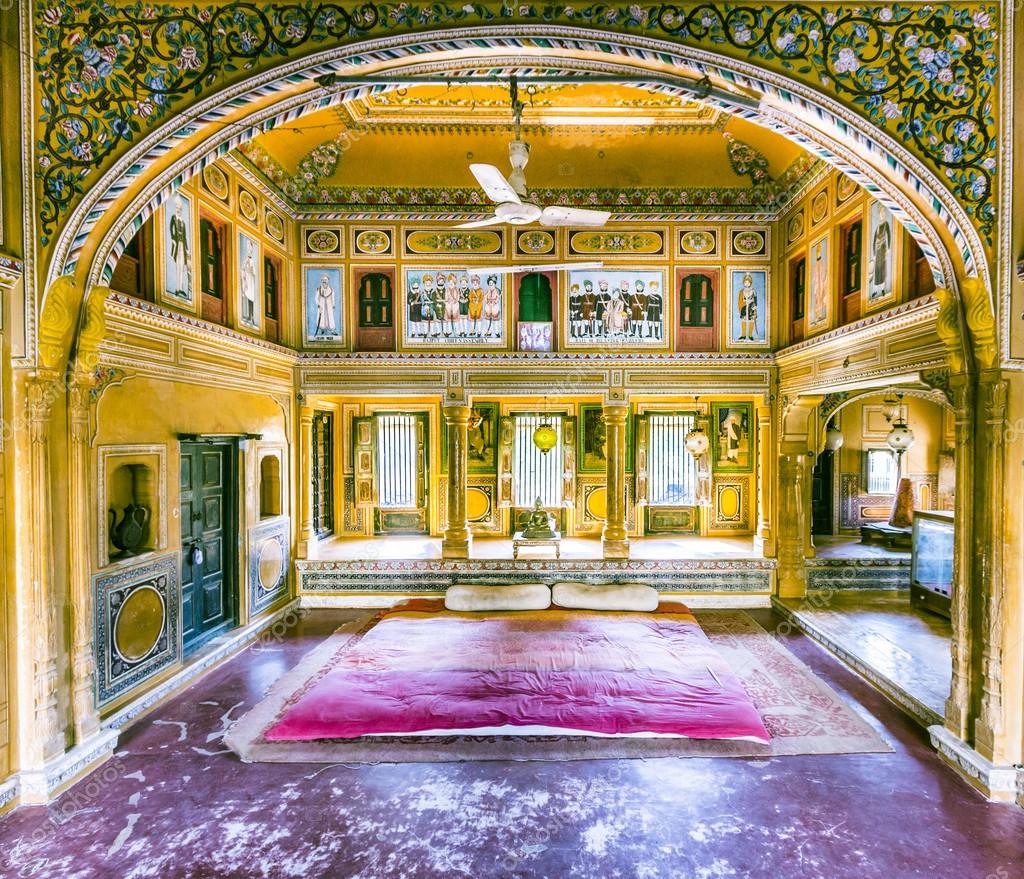
Restoration of architectural treasures
With the decline of traditional industries and the migration of families to urban centres, many of these heritage properties fell into disrepair. However, in recent decades, there has been a growing interest in preserving and restoring these architectural treasures and I suppose, Bollywood played a key role in it. While specific Bollywood movies may not have directly encouraged the restoration of Shekhawati havelis, the cinematic portrayal of these architectural marvels in various films has undoubtedly contributed to raising awareness about their cultural significance and historical importance. By showcasing Shekhawati havelis on the silver screen, Bollywood has inadvertently highlighted the need for their preservation and restoration.

The visually stunning depiction of havelis in Bollywood movies has not only captured the imagination of audiences but has also prompted a renewed interest in heritage conservation among filmmakers, tourists, and locals alike. Some notable Bollywood films shot in Mandawa include Bajrangi Bhaijan (2015), PK (2014), Paheli (2005), Mirzya (2016) etc. As a result, there has been increased attention towards restoring and maintaining these architectural gems, ensuring that they continue to stand as a testament to the region’s rich cultural heritage for generations to come.
When it is Shekhawati, embarking on a haveli-hopping adventure is the best thing one can do to admire the town’s exquisite artwork. Some must-visit heritages include Mandawa Fort, Murmuria Haveli, Goenka Double Haveli, and Hanuman Prasad Goenka Haveli. Each haveli boasts unique artwork and historical significance with paintings frequently featuring figures from Hindu mythology and folklore; Gods and goddesses such as Krishna, Radha, Shiva, and Durga are commonly depicted, along with scenes from the Ramayana, Mahabharata, and other ancient epics. Intricate floral and geometric patterns adorn the borders and backgrounds of many Mandawa paintings, adding depth and texture to the compositions. Interestingly, animals such as elephants, horses, peacocks, and camels are often depicted in Mandawa’s paintings, symbolising power, grace, and the natural world. These animal motifs add visual interest and symbolism to the artworks.
Apart from that, paintings portraying scenes of rural life are also common in Mandawa’s artistic repertoire. These vignettes capture the rustic charm of village life, depicting farmers, herders, and artisans going about their daily activities amidst pastoral landscapes.
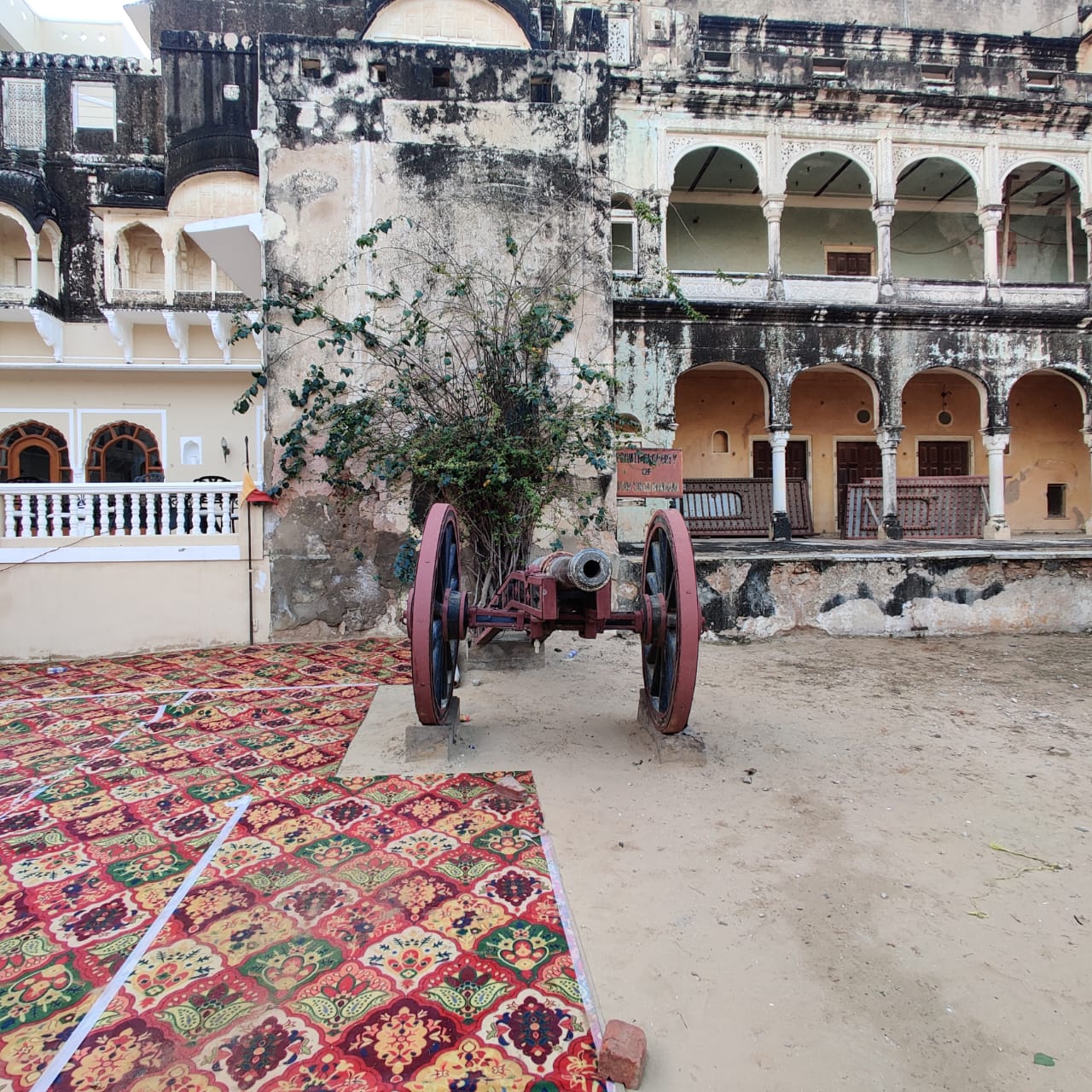
A Glimpse of Royalty
My first stop was Mandawa Fort, also known as the Castle Mandawa, built in the 18th century by Thakur Nawal Singh, who was also the founder of the town of Mandawa. The fort was constructed as a defensive structure to protect the town and its residents from external threats. Its strategic location on a hill provided a vantage point for surveillance and defence. The fort is a fine example of Rajput architecture, characterised by its imposing walls, ornate gateways and as I wandered through its labyrinthine corridors and ancient chambers, I felt a profound sense of awe at the sheer magnitude of its history. From the opulent Durbar Hall to the intricately carved balconies offering panoramic views of the surrounding landscape, every corner of the fort spoke volumes about Rajasthan’s royal legacy. The fort was not only a symbol of power and authority but also a centre of cultural and social life in the region. Notably, this majestic bastion even today stands as a silent sentinel overlooking the town. Like many historical forts and palaces in Rajasthan, Mandawa Fort fell into disrepair over the years due to neglect and changing socio-political circumstances. However, later in the 20th century, efforts were undertaken to renovate the fort and convert it into a heritage hotel, allowing visitors to experience the grandeur of Rajput architecture while enjoying modern amenities.
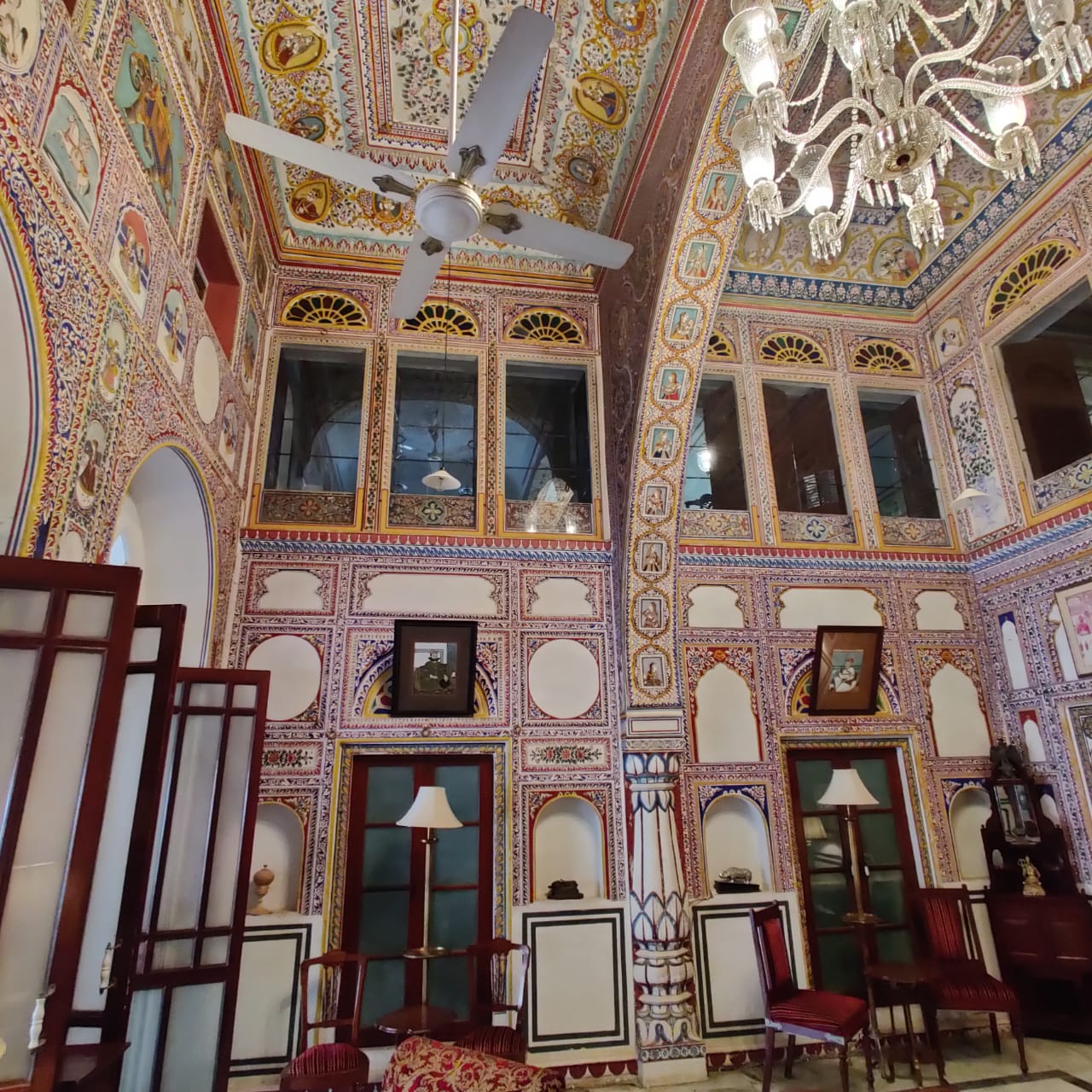
Unveiling Murmuria Haveli
This is a must-visit. Murmuria Haveli’s exquisite architecture and rich historical ambiance make it a captivating location for film shooting. The intricate paintings, ornate facades, and traditional Rajasthani architecture provide a stunning backdrop for various types of film projects, including historical dramas, romantic films, and cultural documentaries. Filmmakers can leverage the haveli’s unique charm and aesthetic appeal to create visually stunning scenes that transport viewers to another time and place. The vibrant colours, intricate details, and cultural motifs present in Murmuria Haveli add depth and authenticity to any cinematic production set in Rajasthan.

Venture into the haveli’s labyrinthine corridors and discover hidden alcoves, secret passages, and secluded chambers. Each corner of Murmuria Haveli holds stories waiting to be uncovered, offering a glimpse into its illustrious past.
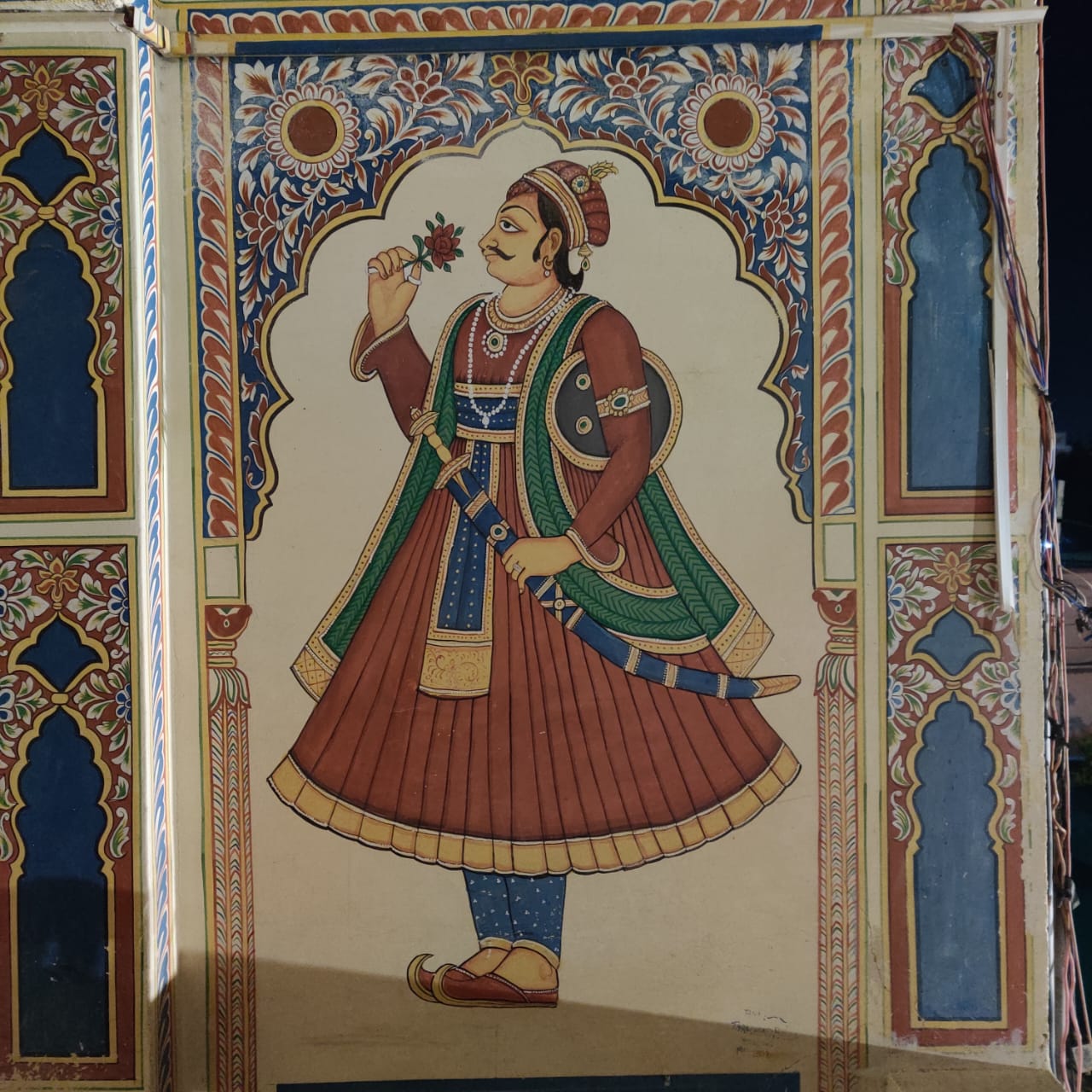
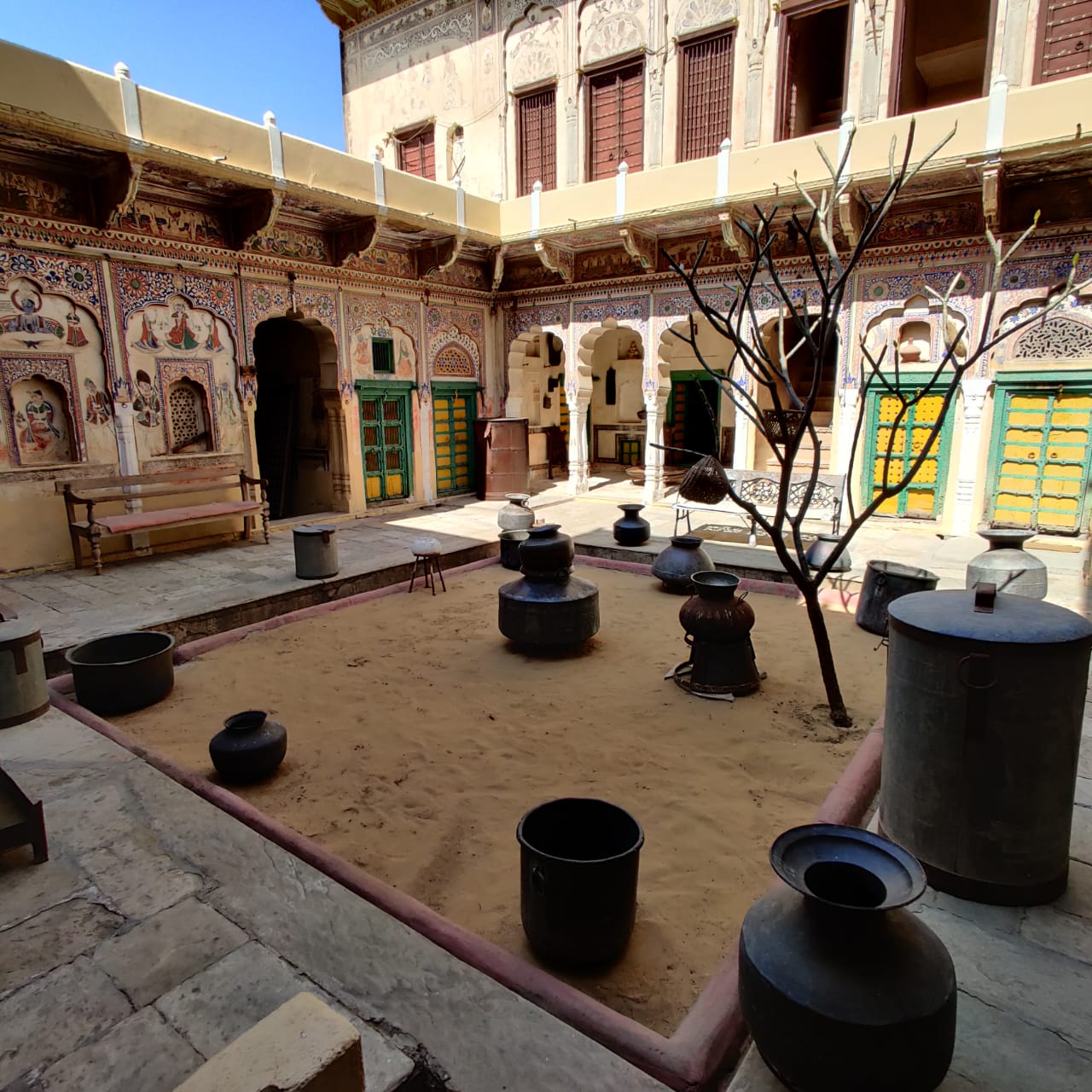
Grandeur of Goenka Haveli
Visiting Goenka Haveli in Mandawa is like stepping into a beautifully preserved slice of history, where the walls whisper stories of a bygone era. As you approach the haveli, its majestic facade adorned with intricate carvings and vibrant frescoes immediately captures your attention, hinting at the grandeur that lies within.
Upon entering the haveli, you’re greeted by a sense of awe and wonder as you find yourself surrounded by a symphony of colours and designs. Every nook and cranny of the haveli is adorned with stunning artwork.
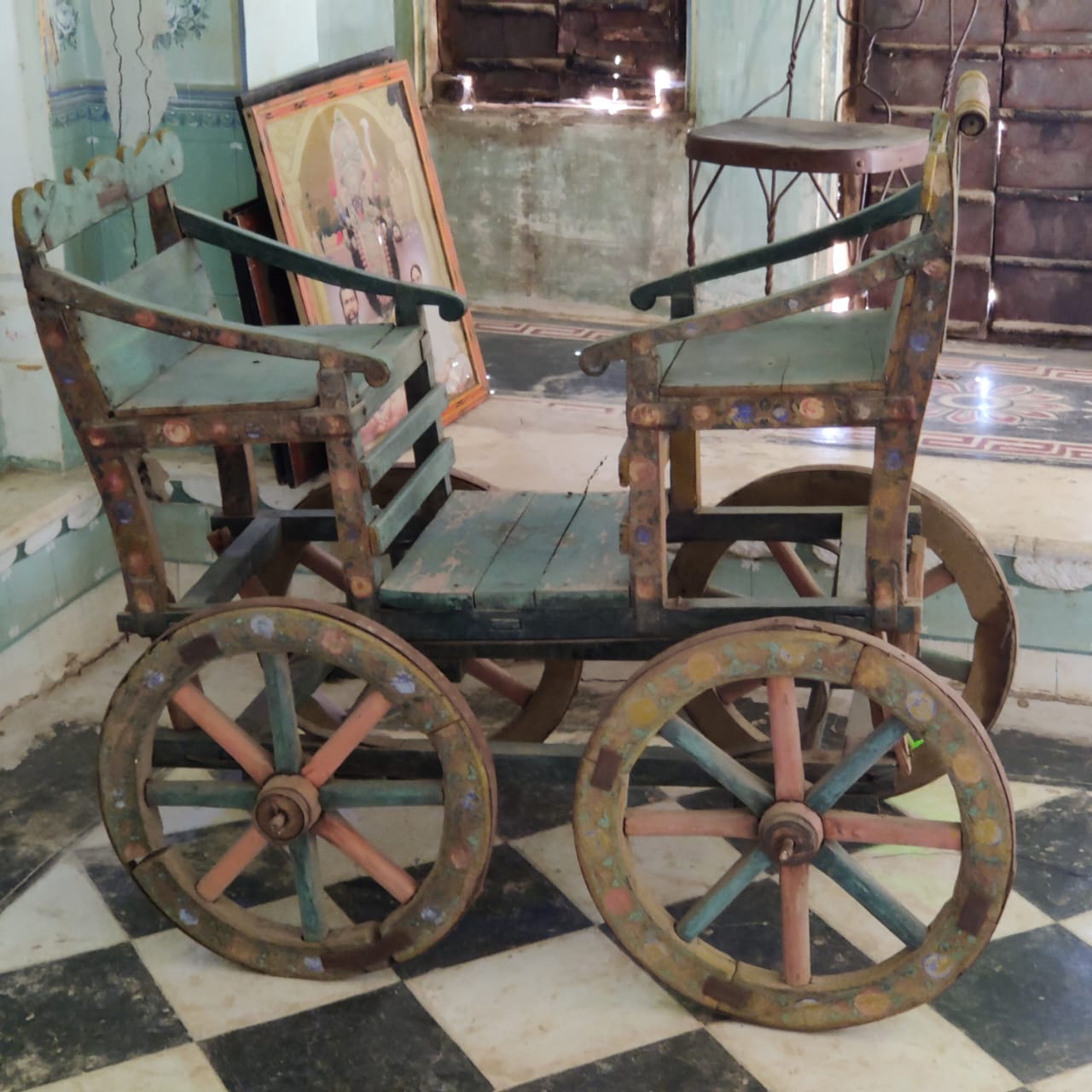
Shopping excursion in Mandawa Market
Wandering through the narrow lanes of town after sightseeing, I was greeted by a kaleidoscope of colours, sounds, and aromas and this happens exactly to be the vibrant market of Mandawa situated within the town. It’s typically near the main square or in the central area, easily accessible to both locals and visitors alike. Shopping here is an immersive experience that engages all your senses as you encounter the atmosphere, traditional crafts, jewellery, personalised souvenirs and cuisines of Rajasthan.
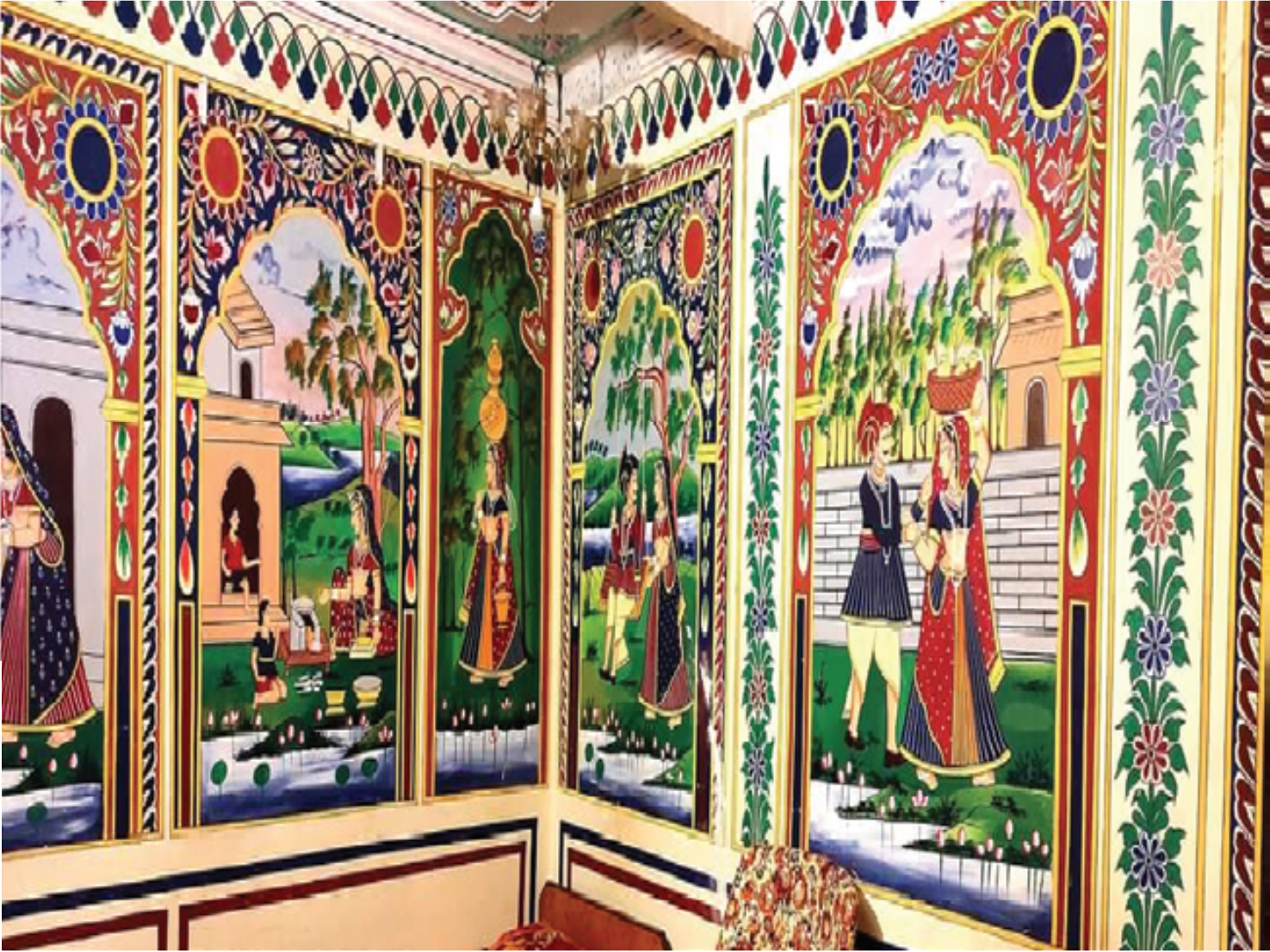
The numerous shops lining the streets stand tall with beautifully crafted items such as pottery, textiles, leather goods, and miniature paintings. Also, from colourful textiles and embroidered fabrics to silver jewellery and antique artefacts, there’s something for everyone here. In fact, one cannot escape appreciating the architectural marvels of the market while gazing at the buildings with paintings of Hindu mythology, Rajput culture, and everyday life in Rajasthan. Moreover, while you indulge your taste buds with the flavours of Rajasthan by sampling local delicacies at the market’s food stalls and eateries, don’t miss the opportunity to try Rajasthani specialties like dal-bati churma, kachori, and ghevar.

The timeless lifestyle
Today, Mandawa stands as a testament to the opulent lifestyle and entrepreneurial spirit of its merchant princes, preserving the rich heritage of Rajasthan for future generations to admire and appreciate. Something that caught my attention was unlike many other tourist hubs, which turned quite commercial, this small town still remains a close-knit community where neighbours often know each other well and social bonds are strong. People take pride in their cultural heritage and often participate in community events, festivals, and celebrations together. Apart from this, the community here proudly exhibits their culture through their attires, which is the colourful traditional wear. Women can be often seen wear colourful sarees or ghagras (long skirts) paired with ornate jewellery, while men wear colourful turbans, dhotis (traditional garment), and kurtas (long shirts). Traditional attire is not only worn during festivals and special occasions but is also a part of everyday life for many.
However, it is noteworthy that Mandawa retains much of its traditional charm though modern influences are also evident, particularly among the younger generation. Many young people pursue education and career opportunities in urban areas, bringing back new ideas and perspectives that contribute to the evolving cultural landscape of the town.
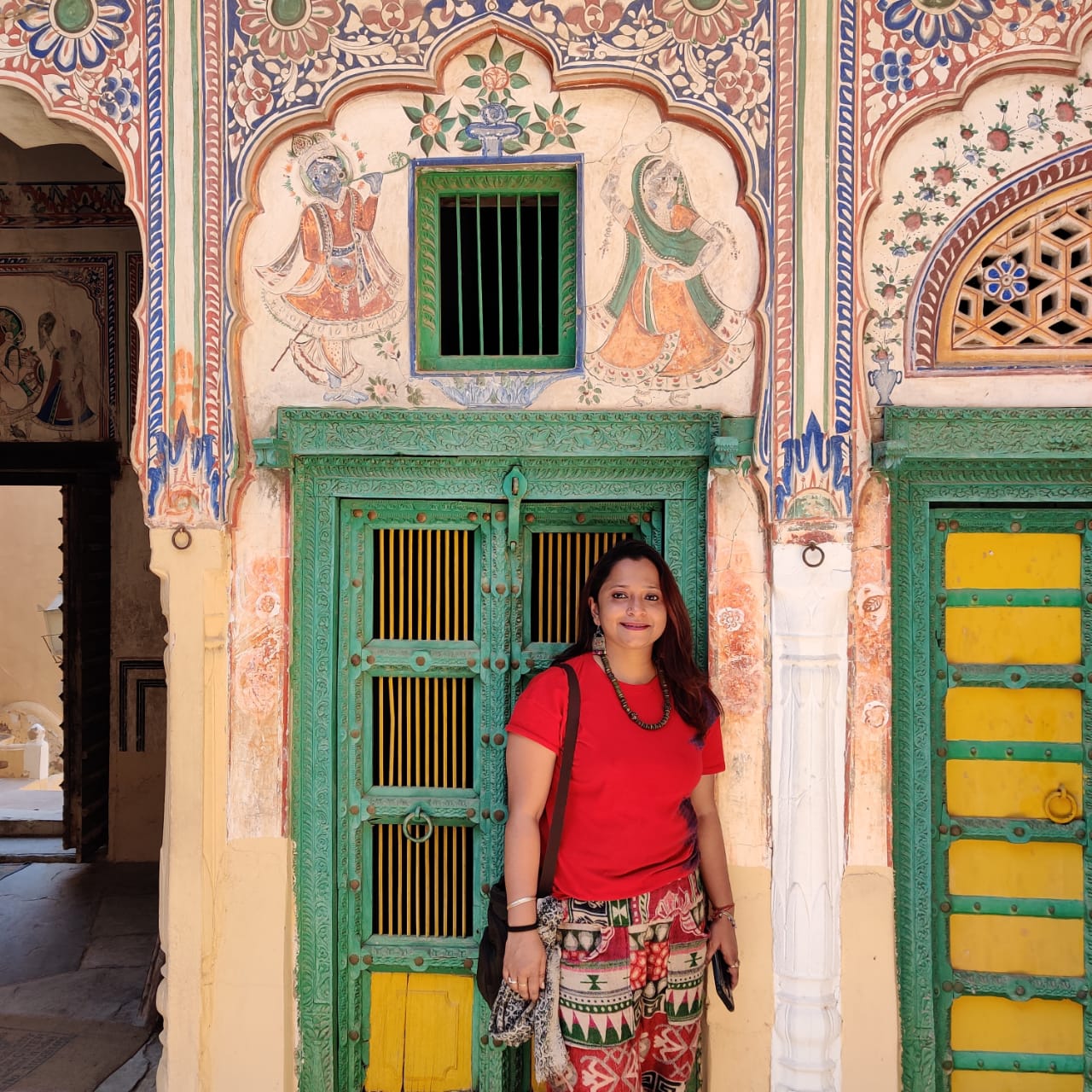
Heritage meets ‘Happily Ever After’
Before I come to the end of my exploration, the most exciting and happening news about this cultural hub is how the mansions here are offered for a unique and enchanting setting for weddings, blending traditional Rajasthani charm with opulent sumptuousness. Couples seeking a distinctive and memorable wedding venue can often choose one of Mandawa’s magnificent Havelis for their special day with versatile spaces that can accommodate various wedding ceremonies and rituals. From intimate mehendi and sangeet ceremonies in the intricately decorated courtyards to lavish wedding receptions in the grand halls, couples have the flexibility to customise their wedding events to suit their preferences. Out of all the perks, the best one is the stunning architecture, intricate frescoes, and timeless elegance of Mandawa’s Havelis which provide a picturesque backdrop for wedding photography and videography. This offers both the photographer and the couple a wider scope to explore & grab all the attention on social media.

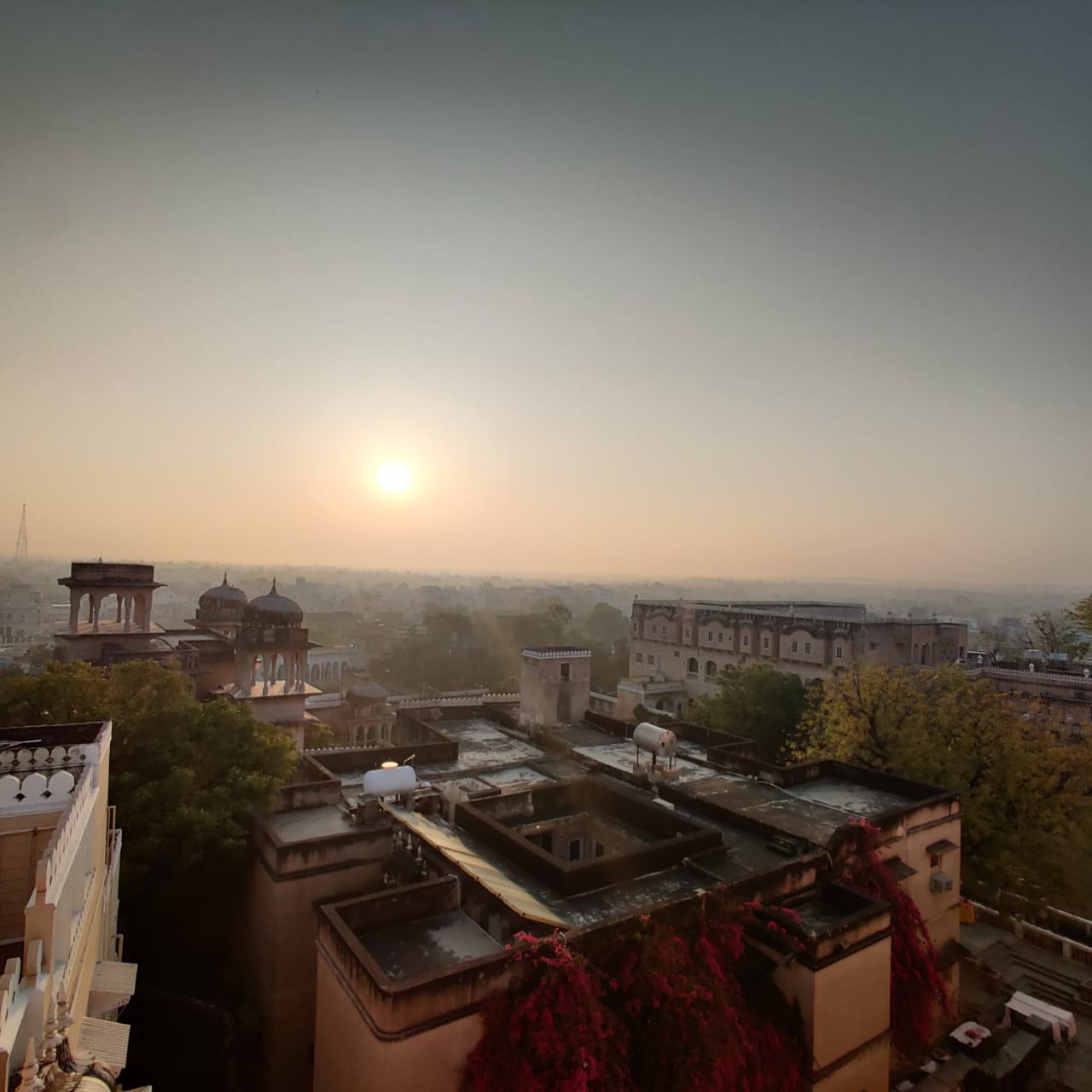
Wrapping up an enchanting expedition
Surrounding Mandawa are several other fascinating destinations, each offering its own unique attractions and experiences. Exploring nearby towns and spots such as Nawalgarh, Fatehpur, Dundlod, the Sethani Ka Johara (Queen’s Stepwell), and the Khetri Mahal allows visitors to discover more stunning frescoes and architectural wonders. However, due to time limitations, I had to bid farewell to the ‘Heart of Shekhawati’ with a promise to explore all the corners of this ‘Open Art Gallery’. Also, it is remarkable that Mandawa is a very small town and one can actually finish all the tourist places in Mandawa in a single day. However, I would recommend staying here and using it as a hub for visiting the other Shekhawati towns.

